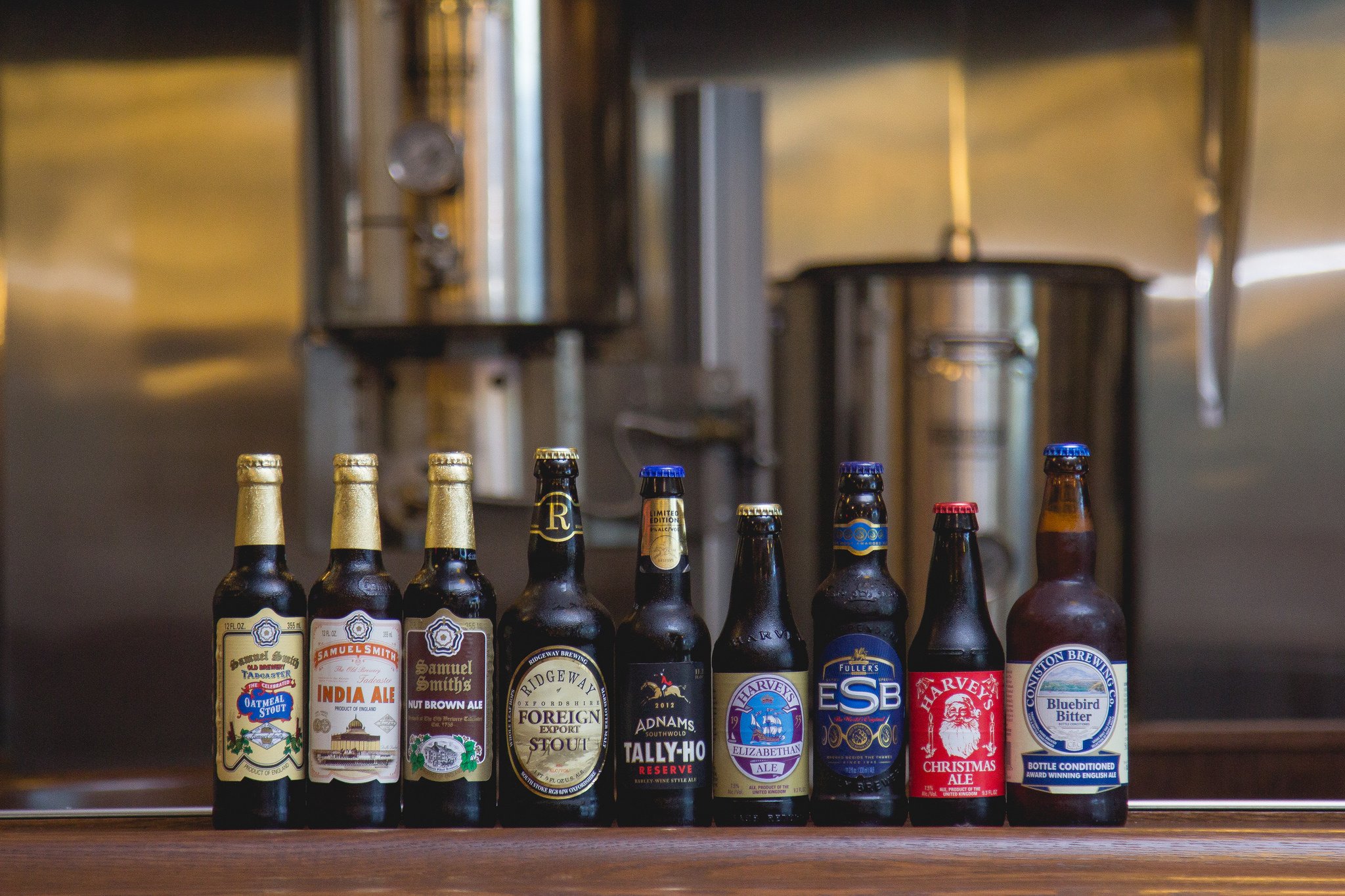
Learn all about the different styles of German beer, and what makes them great. Prost!
Germany’s great history of brewing dates back over 1,000 years. Throughout the centuries, German brewers created a number of different styles of lagers and ales, all while following the Beer Purity Law (Reinheitsgebot) that mandated all beer can only be made from barley, hops and water. Read on to learn all about the different styles of German beer, and you’ll be an expert the next time you go to Oktoberfest.
- German & German-Style Ales
- German & German-Style Lagers
- German & German-Style Hybrids
- Dispensing German beer
- How To Pour German beer
German & German-Style Ales
Berliner Weissbier

This is the perfect beer for a springtime cocktail hour. There are lots of wild, unique, fruity flavors despite the fact that this beer usually contains little to no hops. Levels of bitterness and sweetness are comparatively low while the fizz tends to be high. Pale, straw color (sometimes cloudy in unfiltered varieties) and sour, tart, acidic flavors rule in traditional recipes, while many American brewers have been concocting creative styles that showcase lemon, peach, or raspberry infusions. Bartenders who adhere to traditional service rituals might squeeze a sweet, berry-flavoured syrup into a pint to cut the bitter, acrid notes of an authentic brew. ABV is typically very low in a Berliner and range between 3% and 5%, so you can serve a couple glasses in one session alongside soft, buttery cheeses like bleu, camembert, or havarti.
Examples of Berliner Weissbier
- Professor Fritz Briem 1809 Berliner Weisse (Professor Fritz Briem)
- Dragon Fruit Passion Fruit Berliner (J. Wakefield Brewing Company)
- The Eleventh Labor (The Schlafly Tap Room)
Dunkelweizen
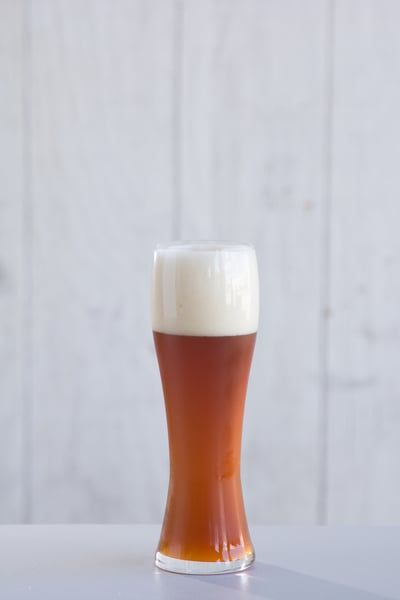
“Dunkels”, or “dark wheats”, are popular for their rich color and bold malt texture. Acidity is usually pretty low and ABVs typically fall between 4% and 6%. Darker and more robust Dunkels offer a chocolaty flavor profile and appearance, while common, traditional varieties show notes of clove and banana. Dunkelweizens can be a nice companion for desserts like fruit pies or can stand up to main-course like a roasted chicken.
Examples of Dunkelweizen
- Ayinger Ur-Weisse (Privatbrauerei Franz Inselkammer KG)
- Franziskaner Hefe-Weisse Dunkel (Spaten-Franziskaner-Bräu)
- Shiner Holiday Cheer (Spoetzl Brewery)
Gose
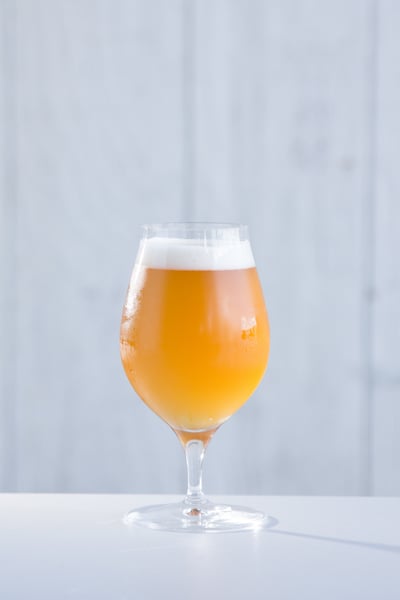
Gose is a nice springtime beer for drinkers who appreciate sour, tart, salty, or fruit flavors. Like the Berliner Weissbier, your bartender might insist on squeezing a fruit or berry syrup into your glass to cut a bit of the acidity and add a floral aroma. Salt and coriander are traditionally added to a Gose’s high malt content, giving it a citrusy, lightly spiced essence with a crisp mouthfeel. Often, you’ll encounter fruit aromas like apricot in Gose recipes. Most servings fall between 4% and 5% ABV and can be a nice choice to go along with a salad or main course of fish.
Examples of Gose
- Freigeist Geisterzug Gose Rhubarb (Braustelle)
- Old Pro Gose (Union Craft Brewing Company)
- Citra Hose (de Garde Brewing Co.)
Weissbier (Hefeweizen)
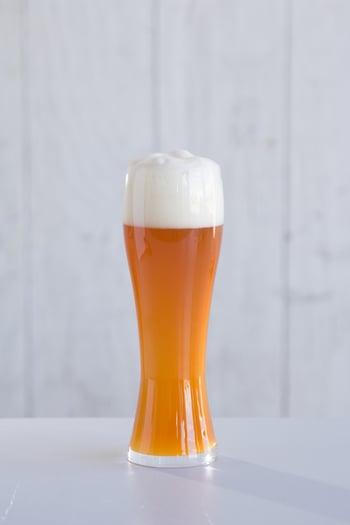
Known to American beer drinker as a Hefeweizen, Weissbier derives its tart, spicy, and fruity flavor from high contents of bold, active yeast strains. Pale yellow to honey color and sometimes cloudy in appearance, hefeweizens often have a fizzy head that keeps its place throughout your session. Banana and clove flavors are definitive of the style. Usually falling between 5% and 6% ABV, this is a great wheat beer to serve alongside any dinner of poultry or fish.
Examples of Weissbier (Hefeweizen)
- Andechser Weissbier Hell (Klosterbrauerei Andechs)
- Schneider Weisse Tap 1 Mein Blondes (Weisses Bräuhaus G. Schneider & Sohn)
- Sierra Nevada Kellerweis Hefeweizen (Sierra Nevada Brewing Co.)
Kölsch
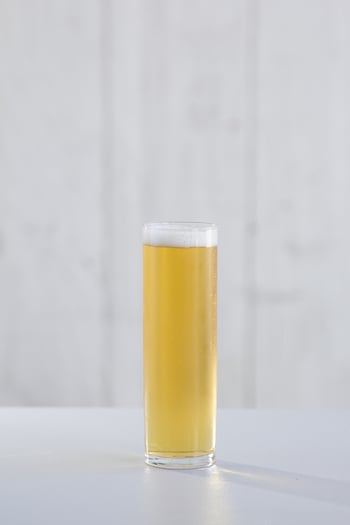
Light, bright, and crisp is Kölsch— a once-unique and obscure German wheat that has gained popularity with many American brewers who have put their own spin on the style. Brilliant clarity in some kölsches remind drinkers of a fizzy white wine, and some varieties offer grape and apricot esters that contribute to its appearance, aroma, and sharp mouthfeel. Ranging between 4% and 6% ABV, this popular summertime beer is a party favorite at picnics and barbeques, especially if you’re serving burgers or bratwursts off the grill.
Examples of Kölsch
- Summertime (Goose Island Beer Co.)
- Sprang (Trillium Brewing Company)
- Clearwater Kölsch (Captain Lawrence Brewing Co.)
German & German-Style Lagers
Bock

Traditionally the toast of late-winter or early springtime bacchanals, the heavy, dark, and malty bock just warms the soul. Sometimes a full-bodied bock can feel almost like a meal in itself, which keeps with the old legend that Bavarian monks subsisted on bock during long spells of fasting. Weighing in between a 5% to 7% ABV, the sweet, toasty, nutty aroma and flavor is a wonderful addition to a warm holiday meal of veal, pork, or beef or as a nice companion to an earthy cheese course.
Examples of Bock Beer
- Mahr's Christmas Bock (Mahrs-Bräu)
- La Trappe Bockbier (Bierbrouwerij De Koningshoeven B.V.)
- Samuel Adams Winter Lager (Boston Brewing Company)
Doppelbock
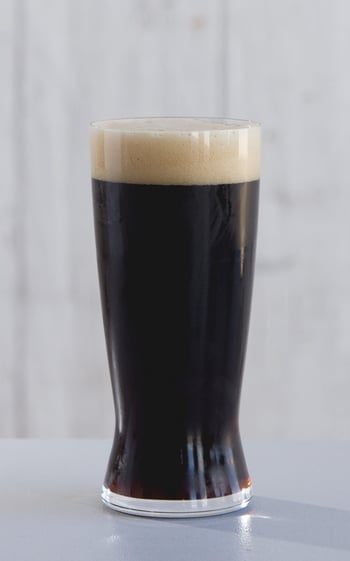
Bock’s bigger, stronger, boozier brother boasts a darker, rich copper to near-black color. The flavor is in the same vein as its forebear, with a slightly more robust caramel, chocolate profile and a higher ABV that ranges from 6% to 9%. This is a beer for a feast of game meats, steaks, or meat pies served with root vegetables. Sometimes a generous pour can substitute as its own malty meal followed shortly by a nap.
Examples of Doppelbock
- Andechser Doppelbock Dunkel (Klosterbrauerei Andechs)
- Weihenstephaner Korbinian (Bayerische Staatsbrauerei Weihenstephan)
- Tröegs Troegenator Double Bock (Tröegs Brewing Company)
Eisbock
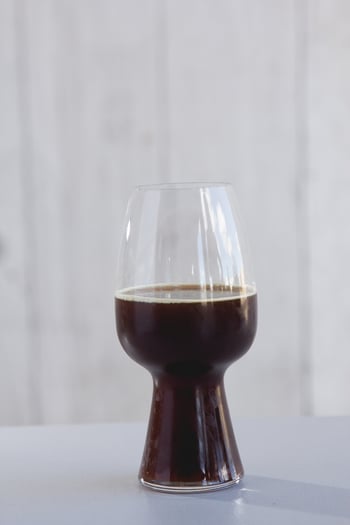
“Ice” bocks build a highly concentrated body, flavor, and alcohol content by freezing and removing a portion of water from the beer during production. What remains is a very dark, heavy, malty brew that is redolent of chocolate syrup, spice, or fruit. Drink an Eisbock if you have nowhere to go, as it packs a boozy punch between 9% and 15%. Serve this beer after dinner for a long-lingering liquid dessert.
Examples of Eisbock
- Schneider Aventinus Weizen-Eisbock (Weisses Bräuhaus G. Schneider & Sohn GmbH)
- Ramstein Winter Wheat Eisbock (High Point Brewing Company)
- Hermannator Ice Bock (Vancouver Island Brewing)
Dortmunder Export Lager

Germany’s Dortmunder Union brewery gave us this beer—once made by and for the working class—a century ago. Now, we find this malty, crisp, refreshingly dry German-style lager poured in brewpubs and bars all over the United States. The appeal of a “Dort” is its aromatic flavor derived from noble hops, and its light, clean, golden appearance. Falling between 4% and 6% ABV, this is a great dinner beer for seafood, shellfish, or poultry.
Examples of Dortmunder Export Lager
- Ayinger Jahrhundert Bier (Privatbrauerei Franz Inselkammer KG / Brauerei Aying)
- Labrador Lager (Thirsty Dog Brewing Company)
- Great Lakes Dortmunder Gold (Great Lakes Brewing Co.)
Pilsner
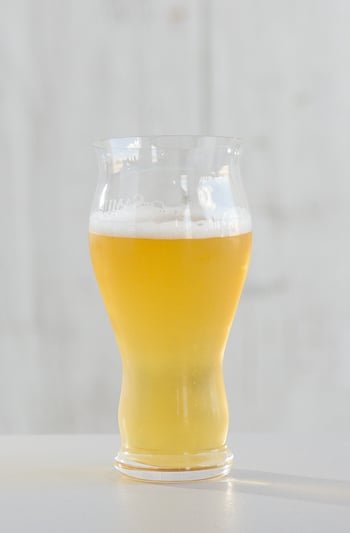
The “Pils” might be Germany’s most popular lager export, and is easily recognizable in every local brewpub and beverage store. Ranging in color from pale straw to yellowish gold, Pilsners are notable for crisp, floral aroma and finish with a zesty, bitter mouthfeel. Its light, crisp texture make a cold pils a great summertime pick for a barbeque, and with an ABV range between 4% and 6%, this is a great session beer.
Examples of Pilsner Beer
- Neumarkter Lammsbräu (Organic) Pilsner (Neumarkter Lammsbräu)
- Prima Pils (Victory Brewing Co.)
- Pivo Pils (Firestone Walker Brewing Co.)
Maibock (Helles Bock)
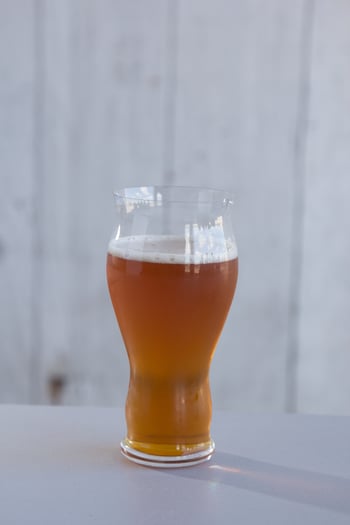
The perfect spring beer —the name, translated, means “May” bock—is the lightest and most sprightly of bocks. Medium-amber to light copper in color, hops are the main character that slightly overpowers a Maibock’s malty finish. With an average ABV between 5% and 8%, serve one at a springtime cocktail party or at dinner alongside pasta dishes, salmon, or shellfish.
Examples of Maibock (Helles Bock)
- Hofbräu Maibock (Hofbräuhaus München)
- Einbecker Mai-Ur-Bock (Einbecker Brauhaus)
- Maibock Hurts Like Helles (Jack's Abby Brewing)
Märzen (Oktoberfest)
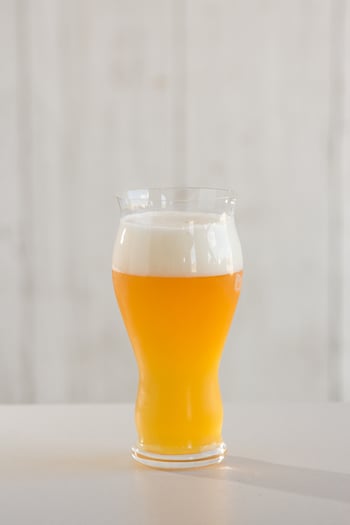
The favorite for Fall revelers, Märzen has traditionally been brewed in March to be enjoyed at festivals starting in September. With a clear, copper to reddish brown appearance, the Oktoberfest’s toasted, malty mouthfeel offers a robust, mildly hoppy lager that rounds out between 4% and 7% ABV. Since you’ll be enjoying a Märzen in the fall, you may as well drink one alongside rich German dishes like grilled knockwurst, game meats, or schnitzel.
Examples of Märzen (Oktoberfest) Beer
- Spaten Oktoberfestbier Ur-Märzen (Spaten-Franziskaner-Bräu)
- Paulaner Oktoberfest-Märzen (Paulaner Brauerei GmbH & Co.)
- SurlyFest (Surly Brewing Company)
Munich Dunkel
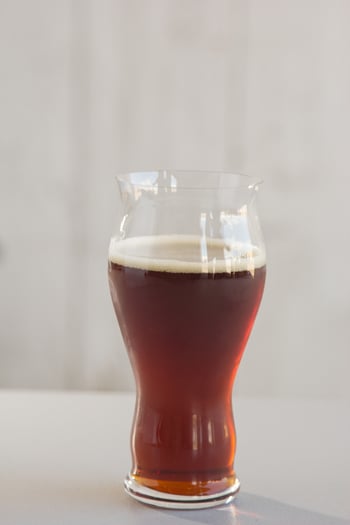
Munich malts contribute to the Dunkel’s dark, roasted textures of chocolate and fresh-baked bread. It’s a beautiful beer with a dark amber to brown complexion, and its German noble hops infuse a slight, refreshing, full-bodied finish without being overly sweet. With its dark, heavy complexion and ABV between 4% and 6%, you’ll want to drink a Dunkel alongside sausages or an earthy cheese course.
Examples of Munich Dunkel
- Beck's Dark (Brauerei Beck & Co.)
- Spaten Dunkel (Spaten-Franziskaner-Bräu)
- Harpoon Dark (Harpoon Brewery & Brew Hall)
Munich Helles
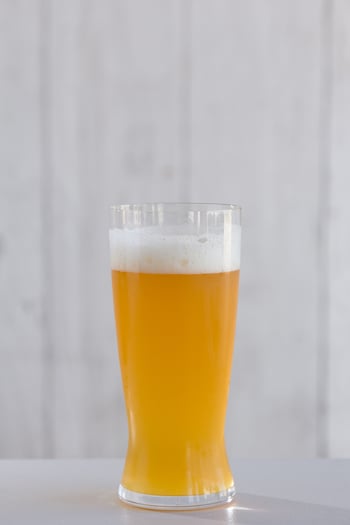
Munich’s other popular lager, the Helles, will be much brighter and lighter than the Dunkel (“Helles” means “pale”) with a crisp finish that is comparable to a Pilsner. The Helles is a cool, refreshing, everyday beer that pairs well with salads, shrimp, or fish. Like the Dunkel, Munich Helles usually fall in the range of 4%- to 6% ABV, making it a nice session beer for a warm day.
Examples of Munich Helles
- Augustiner Bräu Lagerbier Hell (Augustiner-Bräu Wagner KG)
- Weihenstephaner Original (Bayerische Staatsbrauerei Weihenstephan)
- Summer Helles (New Belgium Brewing Company)
Schwarzbier
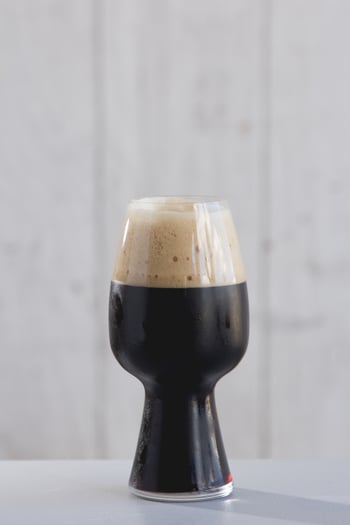
Schwarzbier will surprise your palette a bit if you’re expecting its rich, dark, robust appearance to give you an overly bitter, roasted malt flavor typical of other near-black beers like stouts and porters. Schwarzbier translates to “black beer” and gets its dark appearance from long-roasted malts. Despite its appearance, it has a lighter-than-expected flavor profile and "twang," the latter of which is likely due to its roast-based acidity inside of a relatively thin body/malt profile. You will definitely taste notes of chocolate within this malty brew, but without any harsh, burnt aftertaste. Typical ABVs come in on the low end, falling between 4% and 6%. Schwarzbier’s light, bubbly head make for a brilliant appearance in a flute or other tall vessel, and this cold weather beer is best enjoyed alongside heavy, homecooked German sausages, game meats, or pastries.
Schwarzbier Commercial Examples
- Mönchshof Schwarzbier (Kulmbacher Brauerei AG)
- Duck-Rabbit Schwarzbier (The Duck-Rabbit Craft Brewery)
- Saranac Black Forest Black Beer (Saranac Brewery)
Roggenbier
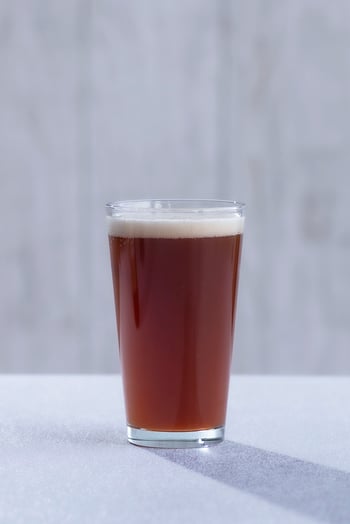
Similar to a Dunkelweizen, but made with rye instead of wheat, Roggenbier simply means “rye beer” in German. It features a grainy and spicy flavor with low levels of bitterness. You may detect some of the typical flavors you’d find in a wheat beer, such as, banana, vanilla or clove. Roggenbier typically has an ABV ranging from 4.5-6% with color that ranges from light coppery-orange to very dark reddish or coppery-brown.
Examples of Roggenbier
- Roggenfest (Flagship Brewing Company)
- Roggen (Apostelbräu)
- Roggenbier (Reuben’s Brews)
Kellerbier, Zwickelbier & Landbier
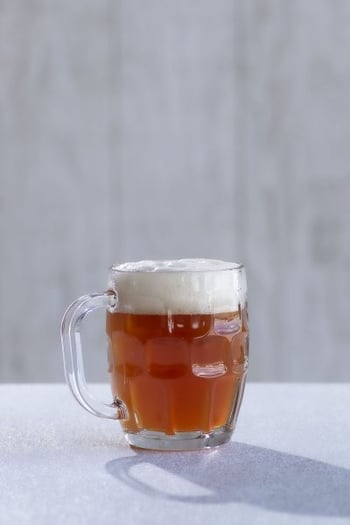
Kellerbier, Zwickelbier and Landbier are three related styles of lager from the German state of Franconia. All three are unfiltered, unpasteurized and are traditionally hoppier than a helles. Many are served straight from the barrel in Germany.
The name Kellerbier translates to the phrase “cellar beer” because it was produced in cellars, and even caves during the Middle Ages, so it could be brewed and conditioned in cooler conditions during a time before there was any kind of refrigeration. They also have low carbonation because they are conditioned in the open environment allowing CO2 to escape.
With an ABV that ranges from 4.7-5.4%, Kellerbiers are broken down into two sub-styles, Amber Kellerbier and Pale Kellerbier. Amber Kellerbier has a deep gold to reddish-amber color with a malty taste and creamy mouthfeel. Pale Kellerbier is more pale yellow to light gold in color with a little more sweeter taste.
Zwickelbier is similar to a Kellerbier. The biggest difference being that it has a higher amount of carbonation because it isn’t left exposed to the environment for as long. It is also less hoppy, weaker and darker. The name comes from the name of the valve (a zwickel) on the casks or tanks that brewers sampled the beer from. Both kellerbier and zwickelbier names refer to more about the process that the lager was brewed with than it being an actual style of beer with its own characteristics.
Landbier means “country beer”, which is a term breweries in the Franconian region use for their house beer. It refers to a kind of lager, but no two landbiers are the same. They can differ in color and flavor depending on the brewery. It is generally known as more of a marketing term than it actually refers to a specific type of beer.
Examples of Kellerbier, Zwickelbier & Landbier
- Buttenheimer Kellerbier (St. Georgen Bräu Buttenheim)
- Weihenstephaner 1516 Kellerbier (Bayerische Staatsbrauerei Weihenstephan)
- House Lager (Jack's Abby Brewing)
Zoigl
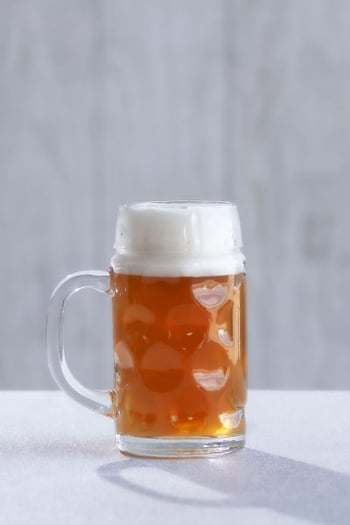
Zoigl beer is brewed in the Oberpfalz, which is a region of the German state of Bavaria that borders the Czech Republic. Its brewing tradition goes back over 500 years to the 15th Century. To this day community-owned breweries still make Zoigl using wood-fired kettles. The wort is then transferred to the brewers’ cellars where it is fermented and lagered before the beer makes its way to the “Zoiglstub’n” where it is served. The name Zoigl comes from a take off on the German word for sign, referring to the six-pointed star sign (similar to the Star of David) that was hung outside of brewhouses to notify neighbors when fresh zoigl was ready to be served.
Just like Kellerbier and other Francoian styles, zoiglbier is unfiltered and has an amber color. Flavor can vary depending on the brewhouse as each brewer brings their own unique style and preferences to the recipe.
Examples of Zoigl Beer
- Mönchshof Zoigl (Kulmbacher Brauerei)
- Zoigl (Kommunbrauerei Mitterteich Zoiglbauer)
- Zoigl (Gänstaller Bräu)
Rauchbier
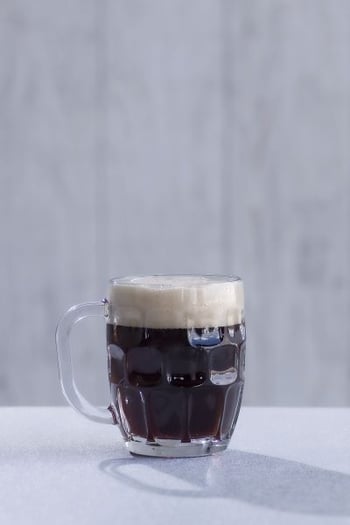
Rauchbier or “smoke beer” is a style of German lager that uses malt smoked over beechwood to impart a unique smoky flavor to the beer. This process was actually the standard way to dry malt until the early 1800s when advancements in technology relating to the malting process allowed brewers to indirectly apply heat to malted grain. This allowed them to remove the hints of smokiness that always made its way into the beer.
While most German brewers adapted with the times, a handful of breweries in Bamberg carried on the old ways of drying their malt directly over a flame. This brought the region notoriety for being the home for this style of German lager. With the rise of craft beers in North America and around the world, many craft breweries have created their own smoked beers, but only beer brewed in the time-honored Bamberg tradition can be considered a true rauchbier.
Rauchbier will have a light copper to dark brown color with an ABV of around 5-6%. The aroma and taste will have a combination of smokey and malty flavors to it. Some people even refer to smoked beers as “bacon beer” because of the smoked flavor.
Examples of Rauchbier
- Aecht Schlenkerla Rauchbier - Märzen (Schlenkerla)
- Lager Rauchbier (Brauerei Spezial)
- Rauchbier (Brauerei Göller)
German & German-Style Hybrids
Altbier
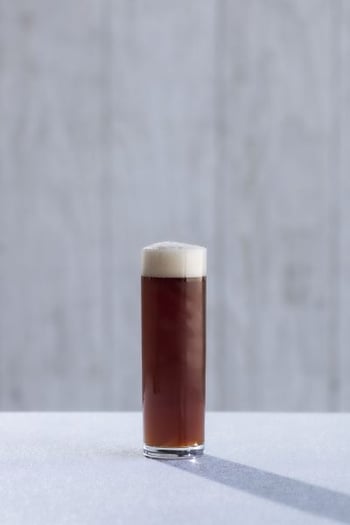
Originally created in the Dusseldorf region of Germany, the word “alt” in German means old which is a reference to the older style of brewing used to originally make it. Altbier is made with a top-fermenting yeast, like an ale, instead of the “newer” style of bottom-fermenting lager yeast, which brewers in Dusseldorf resisted using at the time. It is considered a hybrid between an ale and a lager because it uses top-fermented yeast, but it is fermented at a cooler temperature like a lager.
Altbier ranges in color from a light copper to dark auburn or brown. Clocking in with an ABV range of 4.5 to 5.5% with a crisp and clean finish thanks to the balance of hops and malt, it pairs well with roasted chicken, pork chops and most sausage dishes. It also goes well with the all-American dessert, apple pie.
Examples of Altbier
- Alt (Uerige Obergärige Hausbrauerei)
- Double Bag (Long Trail Brewing Co.)
- Amber (Alaskan Brewing Co.)
Dampfbier
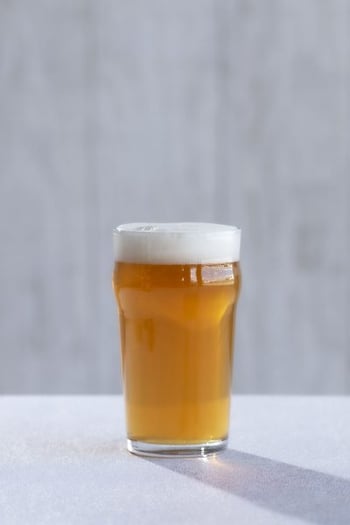
Known as steam beer or California Common in North America, dampfbier was created in the rural Bavarian Forest region of Germany in the 19th Century. It features barley malt fermented with Weissbier yeast at higher temperatures. The name comes from the steam-like bubbles and foam that formed during fermentation.
While traditional dampfbier isn’t regularly imported from Germany to the United States, the California Common style of beer in this country is brewed in a similar style using lager yeast. It features a medium amber to light copper color with ABV ranging from 4.5 to 5.5% and a malty, caramel taste featuring clove and banana notes.
Examples of Dampfbier
- Anchor Steam (Anchor Brewing Co.)
- Dampfbier (Dampfbierbrauerei Zwiesel)
- Dampfbier (Surly Brewing Company)
Kottbusser
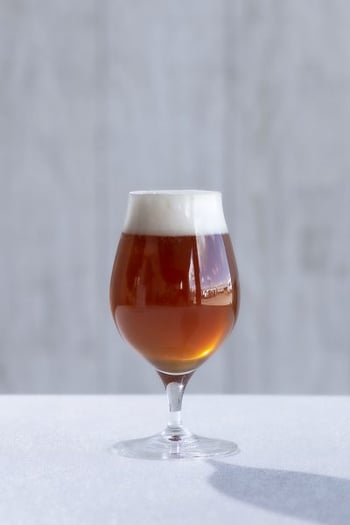
A style of German beer that was outlawed by Germany’s beer purity laws in the late 19th Century, Kottbusser contains oats, honey and molasses in addition to the traditional ingredients of barley, hops and water. The style has been revived by homebrewers and craft breweries in North America, some of which are also referred to as a honey wheat ales. American-made kottbusser beers are usually around 5% ABV that taste like a sweeter altbier with a refreshing, dry finish.
Examples of Kottbusser
- Scurry (Off Color Brewing)
- Snow Drop (Grimm Brothers Brewing)
Dispensing German Beer
If you’re looking to host an Oktoberfest party or just want to have your favorite German beer on tap, then you will need a special keg coupler for your draft system. Many German beers that are popular in North America, including Ayinger, Franzikaner, Hacker-Pschorr, Hoegaarden, La Chouffe, Paulaner, Spaten, Warsteiner and Weihenstephan, require an A-system German slider keg coupler. You can also get an A-system coupler keg pump if you are going that route for your “biergarten”.
Pouring German Beer
In addition to their rich brewing tradition, Germans also have traditions when it comes to pouring their beer. There are distinct pouring styles depending on the style of beer you want to enjoy to fully unlock the flavors associated with each style. Unfiltered beer styles, such as Wheat beers, have yeast particles that can get trapped at the bottom of the bottle. You want those ingredients in your glass to get an authentic experience.
One key thing to remember is that, unlike American beer drinkers, Germans enjoy a good head of foam on their beer. German beer glassware, such as a pilsner glass, weizen glass or a beer stein, is tall to accommodate a full, rich head of foam. A good rule of thumb (no pun intended) is to leave a head of foam that is about three fingers wide at the top of the glass. Not only does the thick head provide a visually pleasing presentation, it also helps to release more of the carbonation from inside the beer so you can enjoy more without the feeling of being full. Note: Please enjoy Oktoberfest and German beer responsibly.
How To Pour A German Weissbier Or Hefeweizen From A Bottle
1. Rinse your hefeweizen glass with cold water ahead of time for a smoother pour. Weissbier has more carbonation than a lager or pilsner so you can get too much foam if poured too quickly.
2. Tilt the glass at a 45 degree angle, and slowly pour the beer down the side of the glass with the bottleneck inside the top of the glass. Note: Some people prefer to stick the neck of the bottle right into the liquid, and slowly pull the bottle out of the glass as the beer pours out.
3. Continue to pour until there is about a finger width’s amount of beer left in the bottle. Use that beer to help get the remaining yeast into your glass. Either swirl the beer around the bottom of the bottle or roll the bottle between your palms to agitate the yeast. Some folks will even lay the bottle on its side and roll it back and forth across the table or bar as well.
4. Swiftly empty the remaining contents of the bottle into your glass to help create a thick head of foam.
How To Pour A German Pilsner From A Bottle
1. Tilt your pilsner glass at a 45 degree angle, and vigorously pour into the glass creating a good amount of foam.
2. Once you’ve emptied about half of your bottle let foam settle for about a minute, and then resume pouring.
3. Alternate pouring and settling until your bottle is empty. This slower method of pouring helps to reduce carbonation and release more of the beer’s flavor. Early German tradition stated that a good pilsner takes seven minutes to pour, but the accepted modern practice takes about three minutes.
How To Pour A German Lager From A Bottle
1. Tilt the glass or stein at a 45 degree angle.
2. Place the tip of the bottle in the glass, and pour the beer quickly down the side.
3. Start to straighten the glass as the beer reaches the top to create a nice head of foam.
How To Pour A German Beer On Tap
Those that are enjoying their German beers on tap should follow the basic rules for pouring a proper pint (or in this case stein) of delicious draft beer.
1. Hold your glass at a 45 degree angle below the draft faucet.
2. Begin pouring beer down the side of the glass until it is about half full.
3. Continue to fill the glass as you tilt it upright to a 90 degree angle, allowing a generous head of foam to form at the top of the glass.
Tags:
Kegworks
Kegworks has been transforming hospitality spaces since 1998 with expertly crafted architectural metalwork and professional draft beer equipment, helping designers, architects, and bar professionals bring their visions to life.


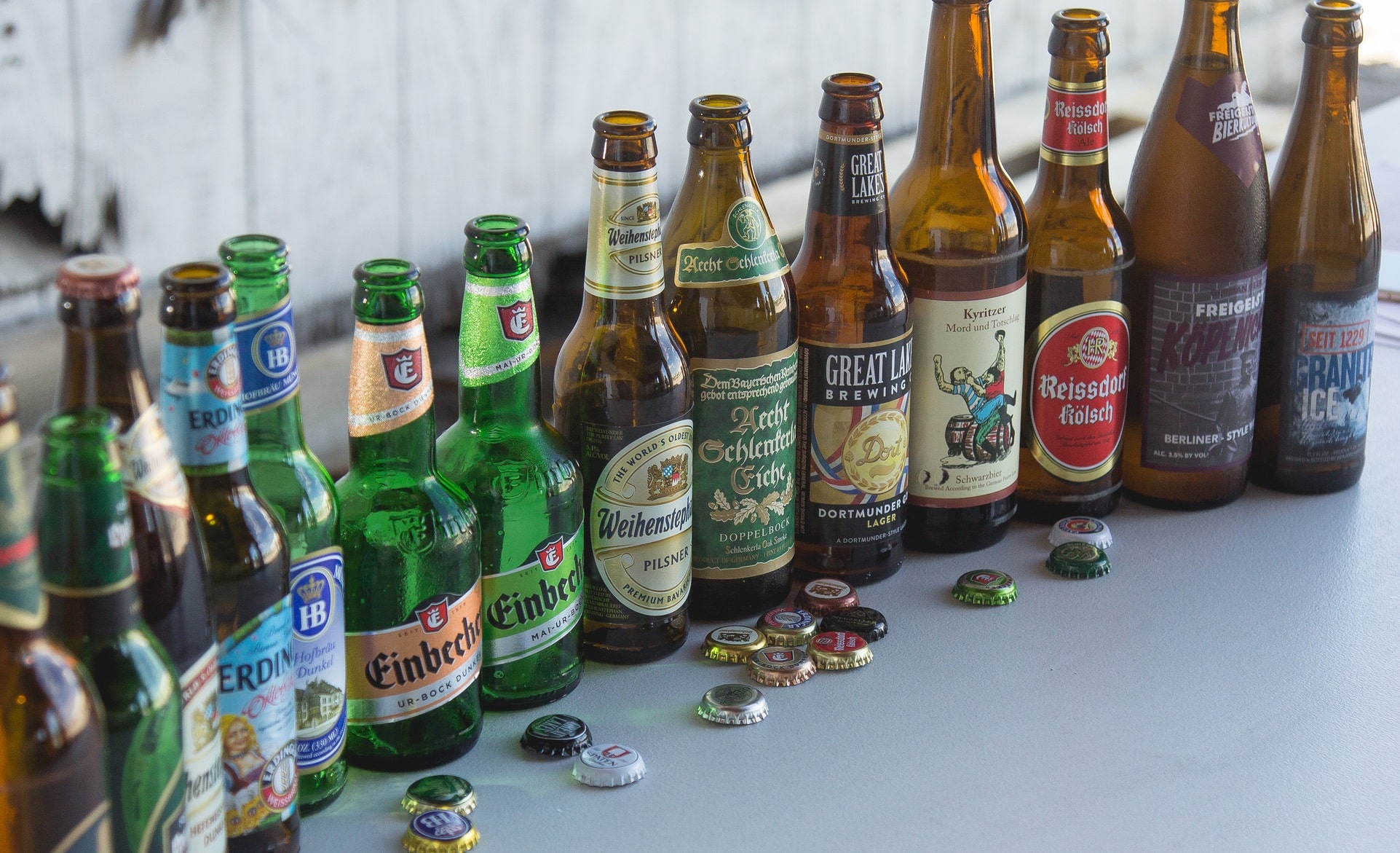
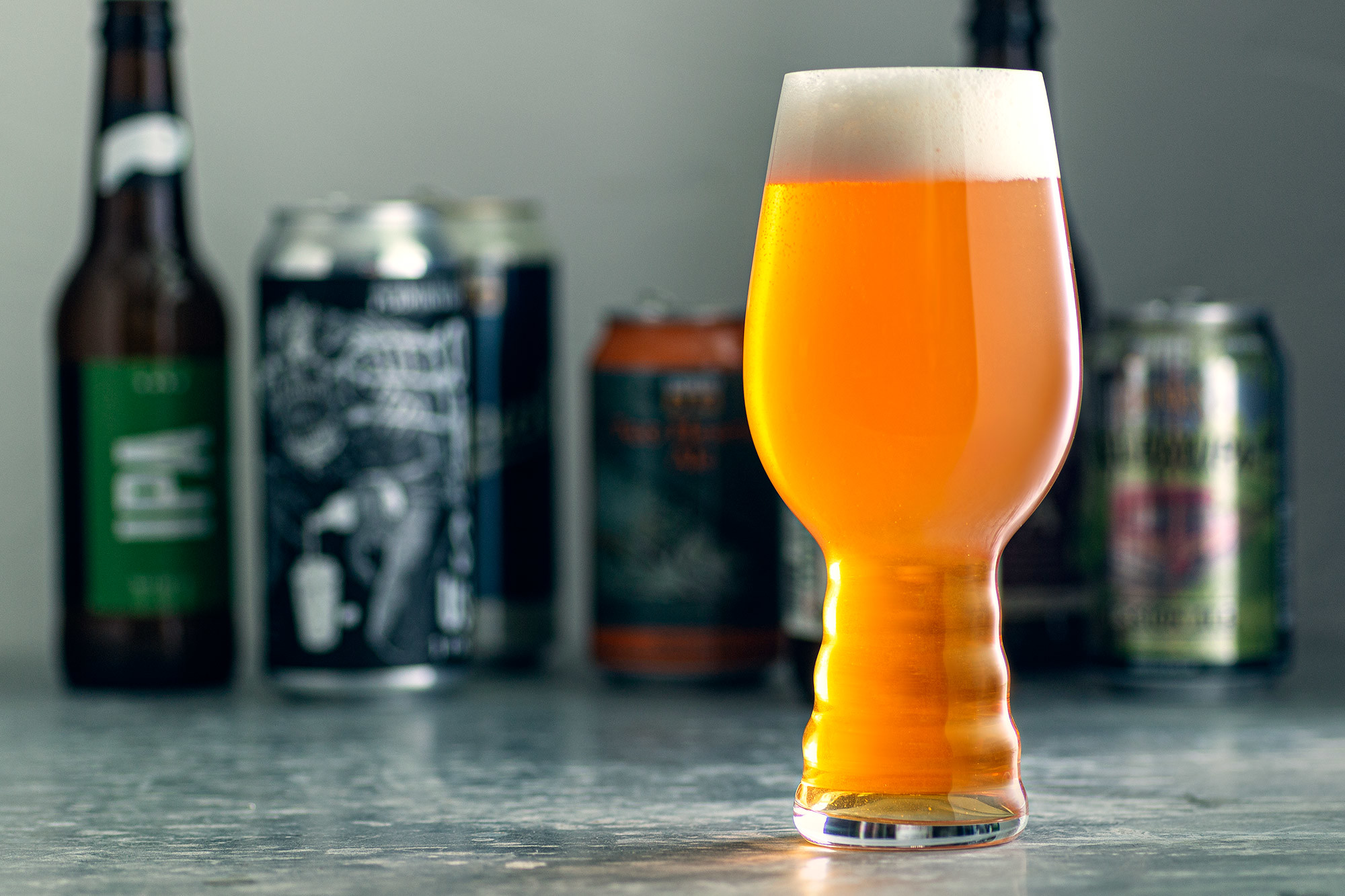
Leave a Comment